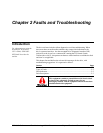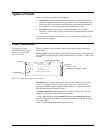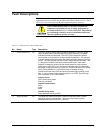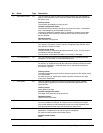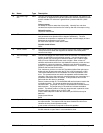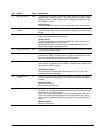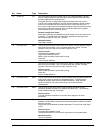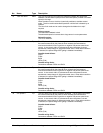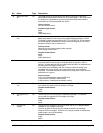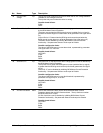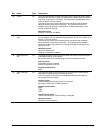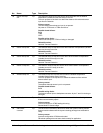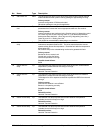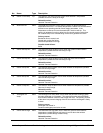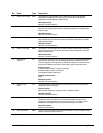
2-8
•
••
•
Chapter 2 Faults and Troubleshooting Innovation Series Medium Voltage GP Type - G Drives GEH-6385
No. Name Type Description
31 Tach loss alarm Alarm
The Tach loss alarm occurs when the difference between the tachometer
feedback (variable Motor speed) and the estimated speed (variable Calculated
speed) is too large.
When the alarm occurs, the drive dynamically switches to tachless control
mode. The drive continues tachless operation until the fault is cleared by an
operator.
Tach loss fault mode can be used to change the fault behavior to trip if
required.
Primary causes:
The tachometer feedback is bad.
The estimated speed is incorrect due to large errors in motor parameters.
Related functions:
Tach Loss Detection
32 IOC phase A Trip The IOC phase A trip fault is hardware generated. The trip fault occurs when
the current measured by the phase A shunt exceeds the instantaneous
overcurrent threshold, which is positive or negative 250 percent rated shunt
current. It also occurs within 25 microseconds when the phase A current
experiences a step change of 100 percent rated shunt. When either condition
is detected, the power bridge IGBT gating is disabled immediately.
Possible board failures:
SHCA
FOSA
BICM
HFPA (FU4)
Possible wiring faults:
Connections between FOSA and SHCA.
33 IOC phase B Trip
The IOC phase B trip fault is hardware generated. The trip fault occurs when
the current measured by the phase B shunt exceeds the instantaneous
overcurrent threshold, which is positive or negative 250 percent rated shunt
current. It also occurs within 25 microseconds when the phase B current
experiences a step change of 100 percent rated shunt. When either condition
is detected, the power bridge IGBT gating is disabled immediately.
Possible board failures:
SHCA
FOSA
BICM
HFPA (FU4)
Possible wiring faults:
Connections between FOSA and SHCA.
34 IOC phase C Trip
The IOC phase C trip fault is hardware generated. The trip fault occurs when
the current measured by the phase C shunt exceeds the instantaneous
overcurrent threshold, which is positive or negative 250 percent rated shunt
current. It also occurs within 25 microseconds when the phase C current
experiences a step change of 100 percent rated shunt. When either condition
is detected, the power bridge IGBT gating is disabled immediately.
Possible board failures:
SHCA
FOSA
BICM
HFPA (FU4)
Possible wiring faults:
Connections between FOSA and SHCA.




